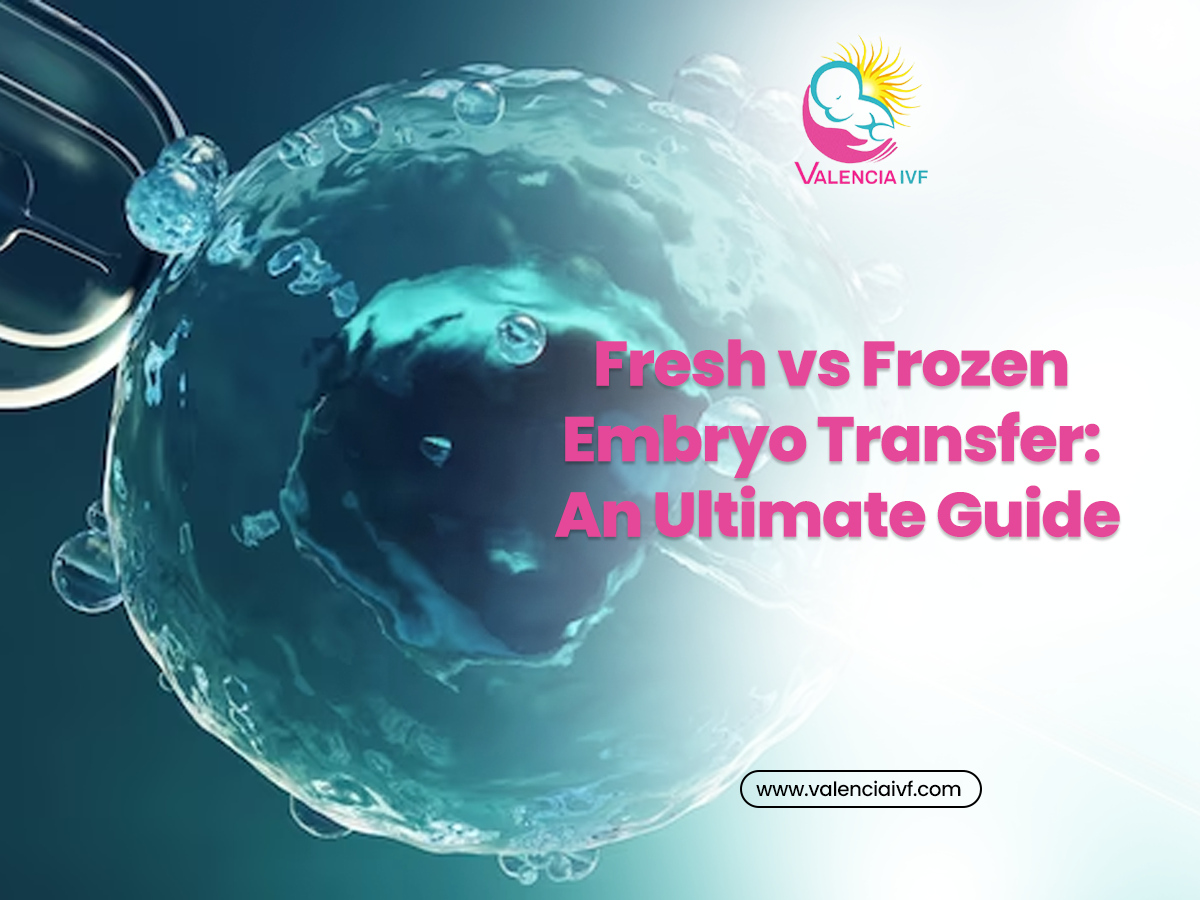
Fresh vs Frozen Embryo Transfer: An Ultimate Guide
IVF process (In Vitro Fertilisation) is a complex process that includes a few steps. From ovarian stimulation to embryo transfer the infertility specialist uses advanced techniques to make your path successful. When the egg and sperm are fertilized in the lab then the embryo is kept in an incubator to provide the right environment for development. After 3 to 5 days the embryo is transferred into the mother’s uterus for implantation. This process of transferring embryos inside the uterus is called the embryo transfer process. Let’s understand all about fresh and frozen embryo transfer.
What is the Fresh Embryo Transfer Process?
Fresh embryo transfer is the process in which IVF fertilized eggs are incubated for up to 3 to 5 days and then the best quality embryos are selected for transferring into the uterus. The selection of embryos for implantation is an important part of this process. In simple words, a fertilized embryo is transferred into the uterus in the same IVF cycle in which eggs are retrieved and fertilized.
What is the Frozen Embryo Transfer Process?
When healthy embryos are formed after the fertilization of egg and sperm during the IVF process, these embryos are kept frozen and retained for future use. These embryos are not used during the IVF cycle. If the first IVF cycle is successful the frozen embryo is used for the next pregnancy and if the IVF cycle fails then frozen embryos are used for the next IVF cycle. In simple words, the embryos are frozen post-fertilization and stored for transfer in the next IVF cycle. The frozen embryo transfer process requires advanced types of equipment and in Frozen Embryo Transfer in Lucknow, you will get advanced facilities with the right health care services.
Advantages and Disadvantages of the Fresh Embryo Transfer Process
There are a few advantages of the fresh embryo transfer process. One is fewer steps involved as compared to the frozen transfer process whereas the disadvantage of the fresh embryo transfer process is that increased estrogen levels may reduce the receptivity of the uterus towards fresh embryo transfer. Higher levels of hormones due to ovarian stimulation can also negatively impact your uterine lining.
Also Read – IVF vs ICSI Fertility Treatment: A Detailed Comparison
Advantages and Disadvantages of the Frozen Embryo Transfer Process
The frozen embryo transfer process has a few advantages and disadvantages. The advantage of the frozen embryo transfer process includes flexibility in the timing of the transfer, it allows pre-implantation genetic testing if the couple wants, and if a woman doesn’t get pregnant or faces pregnancy loss then they can use extra embryos that are previously created. This process also allows recovery from the egg retrieval process before embryo transfer. The disadvantage of this process is the use of less modern techniques because it can harm the embryos. That’s why fertility specialists must use modern types of equipment for this process.
This process also prevents the chances of ovarian hyperstimulation syndrome. OHSS has several symptoms that could lead to complications during pregnancy. During the frozen embryo transfer process fertility specialists prevent hormonal imbalances and decrease the risk of OHSS. You can also consult with the best infertility specialist in Lucknow to increase the chances of a successful pregnancy without any complexities. Endometrium receptivity does not negatively influence this process and genetic analysis of the embryo can be done to increase the success rate of conceiving.
Success Rate of Fresh Embryo Transfer Process and Frozen Embryo Transfer Process
The success rate of fresh embryo transfer is less as compared to frozen embryo transfer process. It also depends on the quality of the embryo and the complications that take place during the transfer process. As per the research, frozen embryo transfer has higher live birth rates as compared to fresh embryo transfer.
Conclusion
In a fresh embryo transfer a fertilized embryo is transferred into the uterus in the same IVF cycle in which eggs are retrieved and fertilized. During the frozen embryo transfer process, the embryos are frozen post-fertilization and stored for transfer in the next IVF cycle. Both processes have their advantages and disadvantages.
With advanced and modern technologies the chances of success increase. It is necessary to consult with your fertility specialist before undergoing this process. Make sure that healthcare services, a team of specialists, and the infrastructure of the clinic offer the best facilities during this process. This increases the chances of successful pregnancy and reduces the risk of complications.
Also Read – IUI vs IVF: Procedures, Success Rates, and Costs


